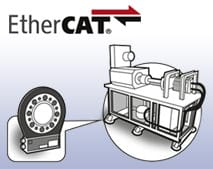How utilizing EtherCAT benefits industrial applications with faster real-time measurements.
The Challenge
As the focus on costs continues to impact throughout industry there is a growing need to provide faster real-time measurements in industrial applications.
There are already a number of different systems in use based on standard Ethernet known from the office communication, but these are often inefficient since a large proportion of the available bandwidth is unavailable.
There are two reasons for this ineffectiveness:
- One is that only small amounts of data are being transmitted at any one time.
- In addition the messages originate when the client or master device in the system requests the data. This means that standard Ethernet operates as a half-duplex information system.



